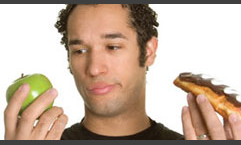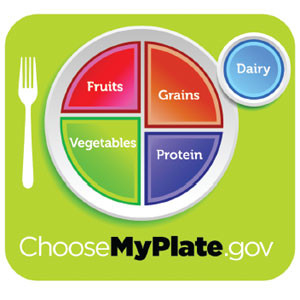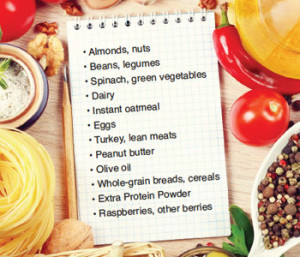 Children’s diabetes is becoming commonplace. We are super-sized, over-served, fast-fooded and restaurant-fed to new weights. As a country, we’ve been tracked over the last few decades, and the results show that our weight has increased at the same rate as our portions have increased. After all, Mama insisted we clean our plates. In her defense, she was mostly cooking fresh, healthier foods. Some of us were rewarded with sweets when we acted nice or made good grades and such. Sweets, then, became even more special to us. So when we were grown and could choose and pay for our own food, we rewarded ourselves with sweets.
Children’s diabetes is becoming commonplace. We are super-sized, over-served, fast-fooded and restaurant-fed to new weights. As a country, we’ve been tracked over the last few decades, and the results show that our weight has increased at the same rate as our portions have increased. After all, Mama insisted we clean our plates. In her defense, she was mostly cooking fresh, healthier foods. Some of us were rewarded with sweets when we acted nice or made good grades and such. Sweets, then, became even more special to us. So when we were grown and could choose and pay for our own food, we rewarded ourselves with sweets.
Our philosophy became: If a piece of something candy, pie, cake is good, then two or three pieces or more frequent sweet or fried or fatty “rewards” must be better, right? In an article published in the AARP newsletter, Martina Navratilova related how, when she came here in 1973, Cokes were packed in 6-ounce bottles and hamburgers were 2.5 ounces of meat. These days, popular-sized soft drinks have grown to 20 ounces, and hamburgers have doubled, tripled or grown even larger in size than then. Our current economy, with so many of our people being out of work and prices being higher for food and transportation, probably plays a major part of our big eating. Starches like potatoes, rice, tortillas, bread and such are less expensive than many other foods and make us feel better. (They don’t call mashed potatoes comfort food for nothin.’) Eating seems to help when we’re stressed, at least for a few minutes. unless you’re one of those mysterious people who can’t eat when stressed or upset.
Our busy lifestyles have made us a grab-and-go, stuffit- down-quickly society. Hey this is beef country! Used to be a man would be out all day, farming and ranching. That man would need hefty meals for breakfast, lunch and dinner. Today’s man is out there bringin’ home the bacon by sitting in an air-conditioned office, wrangling all those telephone calls, sitting in meetings wrestling with facts and figures and punching a computer all day long. We don’t even have to butcher the steer and cook it over an open fire. OK, maybe we do as we grill or barbecue. We’re also Military City, USA, and proud of it. We celebrate our many cultures with different ethnic foods, including the availability of Tex-Mex restaurants on almost any corner, making eating healthier even more difficult.
PLATES AND PORTIONS.

Most dietitians go along with the USDA recommendations as to healthy plate ratios and the types of foods to put in the areas. The USDA now uses a four-part plate, with a side dish or glass of dairy to guide you visually to healthier eating. As you can see by the plate chart, although not exact, there are two large and two smaller portions. The larger portions are for vegetables and grains. The two smaller portions are to be filled with fruits and proteins. This visual cue is a plate which is color coded for appropriate food groups. The red area is for fruit, the green for vegetables, the orange for grains and the purple for protein.
The blue side is for dairy products. Meats used for proteins should be grilled, baked or broiled. Whole grains are best for your waistline, your heart and for a longer lasting feeling of satisfaction.
EAT YOUR COLORED VEGETABLES.
Since color coding is important in assessing portion control, you’ll find that it is equally important to remember a mixture of colors among your vegetables. As it turns out, each of the color groups in vegetables provides different nutrients. So your imaginary colored plate should actually be very colorful in one of the larger sections. Many restaurants serve portions which are three or four times larger than a healthy serving would be. Studies show that we will not only eat most of what’s on the plate placed in front of us, but that we’ll even eat stuff that’s not so tasty (cold stale chips or bread, or popcorn at the movies).
We need to educate ourselves and our children so we can develop healthy eating habits and strengthen our self-control when we’re around food. Remember the old saying, “The best form of exercise is pushing away from the table.” Well, we can now see how a good way to lose weight and eat healthy is to cut down our portions.;
HERE ARE A FEW TIPS TO CONTROL PORTIONS WHEN EATING OUT:
 One way is to order two appetizers. This is a win-win strategy because you can taste two different foods while controlling the amount of calories you consume. Another way is to order one of the “small plates” now offered in many eateries. You can also decide beforehand that you will eat only half of your meal and take the rest home in a “people” bag or container. Some diners make it even less tempting by requesting a “to go” container as soon as the food arrives at the table and placing half of their food into it immediately, putting it out of sight and somewhat out of mind. Ordering a salad to consume before your entrée or a double order of vegetables to substitute for the starchy food included as part of your meal is also a smart way to assure that your plate will be filled with the right foods and your appetite will be satisfied. In many other countries, people are not as fat as we are, with our 65 percent of adults being overweight. You might say, “Yes, but they walk more.” Well, maybe yes, maybe no.
One way is to order two appetizers. This is a win-win strategy because you can taste two different foods while controlling the amount of calories you consume. Another way is to order one of the “small plates” now offered in many eateries. You can also decide beforehand that you will eat only half of your meal and take the rest home in a “people” bag or container. Some diners make it even less tempting by requesting a “to go” container as soon as the food arrives at the table and placing half of their food into it immediately, putting it out of sight and somewhat out of mind. Ordering a salad to consume before your entrée or a double order of vegetables to substitute for the starchy food included as part of your meal is also a smart way to assure that your plate will be filled with the right foods and your appetite will be satisfied. In many other countries, people are not as fat as we are, with our 65 percent of adults being overweight. You might say, “Yes, but they walk more.” Well, maybe yes, maybe no.
Many times, they have more opportunities to use mass transportation systems such as trains and subways than we have. Of course, here in Texas, we drive to get a tube of toothpaste. The real key for many of these places is to simply eat small portions and take longer to eat them. They don’t deny themselves or consider themselves “bad” for eating any foods, including desserts. Moderation is the mantra. It’s how they are brought up … to savor foods and to linger over meals, enjoying the company of family and friends. As a culture of drive-through-and-gobble-down our food, our busy lives leave no time for … well, living! Remember, smaller amounts of food can be consumed in a shorter amount of time. And smaller amounts of healthy foods can stay with you longer and won’t stretch your waistline. Many fast-food places are now including healthier choices on their menus. Just keep in mind, more meat protein does not mean you build more muscle mass, or that it’s more masculine to order the steak. As a matter of fact, excessive meat eating is linked to heart disease and colorectal cancer in men. In addition, men tend to gain weight around their waistlines, where the fat becomes buried deep in the abdomen. This increases your risk for diabetes and dementia as well. Eating more fruits and vegetables and less red meat will help keep your blood pressure down and keep your weight in check.
Now that you’re armed with the visual of what your plate should look like when you’re served, give yourself a little pat on the back. But don’t give up your gym membership or stop walking the dog. Exercise is always an important component of living healthy.






